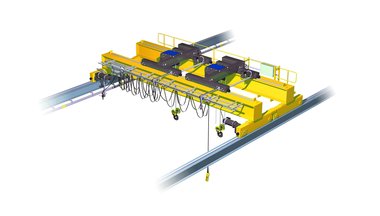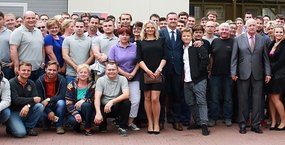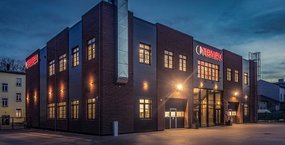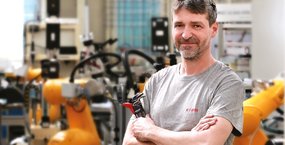Reducing skewing during crane travel

Our equipment for limiting skewing and the effects of skewing caused by the eccentric braking of the crane is protected by a patented solution developed and applied by TEMEX.
In cooperation with VŠB–Technical University in Ostrava and ÚAM Brno, we have developed a system that reduces the effects of skewing and eccentric braking to a minimum for the separate travel drives of cranes .equipped with frequency converters
Introduction
When cranes move along the tracks, undesirable skewing occurs. This friction is caused by additional loads, especially in the horizontal direction, that transmit forces back onto the crane track. These same forces are caused by the eccentric braking of the crane with the crab and load positioned at the extreme end of the crab’s reach.
The causes of skewing and transverse effects during the eccentric braking of crane travel are mainly the following:
- Different diameters of the drive wheels.
- Not entirely precise positioning of the drive wheels during crane travel in the vertical and horizontal direction.
- Difference in the speed of the drive wheels during crane travel.
- Incorrect position of the crane tracks in the vertical, but especially in the horizontal direction.
- Different surface roughness of crane track heads.
- The crab with the load is positioned to the extreme end of the crab’s travel path.
The influence of skewing and transverse effects during eccentric braking on crane operation and description of the equipment for limiting them.
The influence of skewing and transverse effects during eccentric braking on crane operation and description of the equipment for limiting them.
The above causes of skewing and transverse effects during eccentric braking force crane designers to solve this problem. Most solutions are guided by the need for both sides of the crane to travel in the same path at the given time. This solution is based on the seating of the wheel and geometry of the runway showing no deviations, which is impossible and unrealistic in actual practice.
Our solution, as described in detail in Czech Patent No. 291108 from 2003, is based on the fact that there are places on the supporting structure of the crane where the relative deformations from skewing and eccentric braking are the highest in value. Mechanical amplifiers are placed at these points, which are, at the places of the highest relative deformations caused by skewing or eccentric braking, equipped with sensors detecting relative deformations. These individual strain sensors are connected within a special chain so that the values of relative deformations from skewing or eccentric braking are added up, and other loads, especially symmetrical loads, are canceled out, which the special strain chain reliably carries out. A strong signal alerts the beginning of skewing or eccentric braking and this information is fed back to the controls for the separate drives of crane travel controlled by frequency converters. A slight change in the speed of one side of the travel compared to the other side of the travel, which in terms of polarity and magnitude is determined by the signals coming from the strain gauge, keeps the skewing and eccentric braking to a minimum.
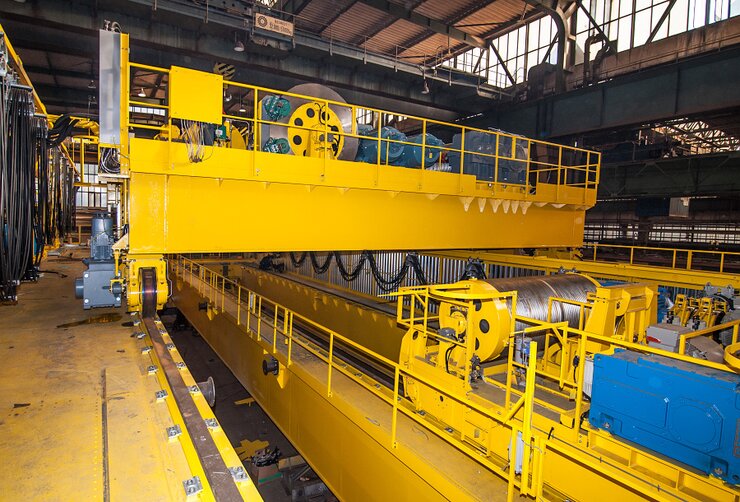
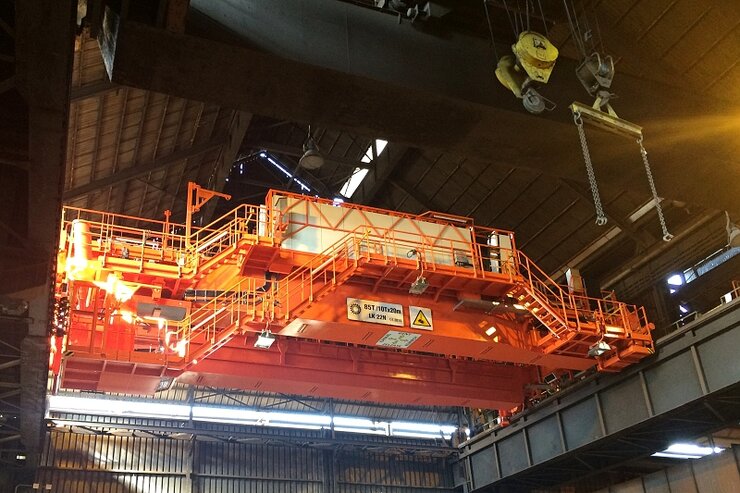
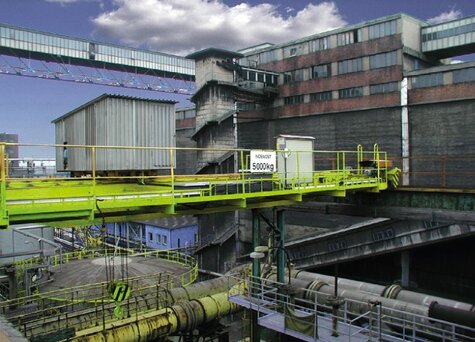
BENEFITS OF OUR SOLUTION
FOR NEWLY INSTALLED CRANES:
- Reducing the weight of the crane structure by up to 5-10%
- Reducing the stress on traction drives by 15-20%
- Reducing the consumption of electricity by traction motors by 5-10%
- According to the currently valid standard, reducing the demands for the accuracy of crane tracks, especially in the horizontal plane, prescribes a maximum value of the curvature of rails in the longitudinal direction to a length of 20 meters min ± 5 mm in their central axis, but by using the device described above this can be increased
- Reducing the wheelbase of the crane, thus saving space for operations. This provides a better approach to the gable walls, and when two cranes are lowered, the distance between the hooks is significantly smaller
- Reducing the effects of skewing and eccentric braking of cranes on their tracks and girders, including their supports, thus reducing their weight by 5-10%
- Reducing the effects of skewing and eccentric braking of cranes makes it possible to extend the life of these cranes and their runways and reduces the demands on the maintenance and rectification of their runways by about 20-30%
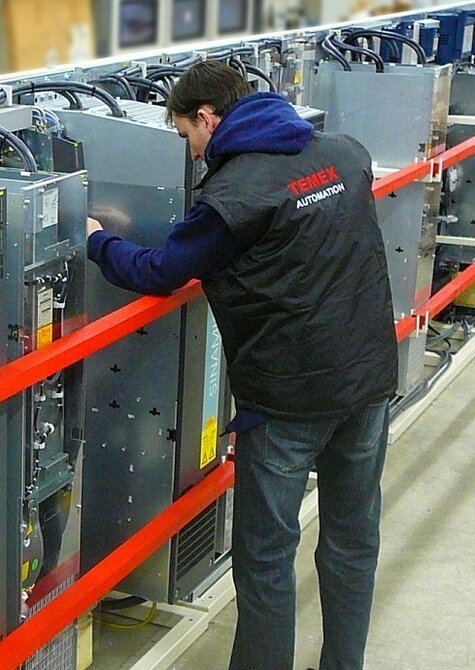
FOR EXISTING CRANES
- Reducing the stress on traction drives by 15-20%
- Reducing the consumption of electricity by traction motors by 5-10%
- According to the currently valid standard, reducing the demands for the accuracy of crane tracks, especially in the horizontal plane, prescribes a maximum value of the curvature of rails in the longitudinal direction to a length of 20 meters min ± 5 mm in their central axis, but by using the device described above this can be increased
- Reducing the effects of skewing and eccentric braking of cranes on their tracks and girders, including their supports, thus reducing their weight by 5-10%
- Reducing the effects of skewing and eccentric braking of cranes makes it possible to extend the life of these cranes and their runways and reduces the demands on the maintenance and rectification of their runways by about 20-30%


Various installations
- VÍTKOVICE HEAVY MACHINERY for two forging cranes in Kunčice with a load capacity of 330 t and span of 30 m and weight of 650 t.
- Drátovna ŽBD Bohumín, a.s. – reconstruction of the drive for a telescopic bridge crane for the transport of coils, the span of which is 28.5 m, and it weighs 51 tons.
- ZÁPOROŽSTAL in Ukraine for a gantry crane with a grappler and load capacity of 32 t, span of 76.2 m and weight of 750 t.
- Two 12.5 t refurbished cranes for VIHORLAT SNINA in the METALURGIE Rumburk foundry.


